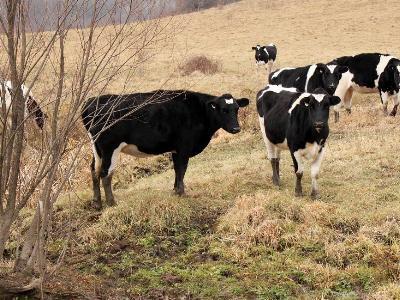5 tips to keep cattle healthy during winter

Feeding adjustments can help your cattle weather the cold
As winter approaches in the Northern Hemisphere, there are measures beef and dairy cattle producers can take to prepare.
Producers should manage cold stress and feed adequately during the winter, according to a press release from BioZyme, which offers some tips:
- Feed higher quality hay (with more energy) and expect cows to increase intake. Conduct a forage analysis to be sure of your hay’s energy level.
- Feed cattle a supplement that improves digestibility of feed and helps ensure that they are extracting all of the energy possible.
- Consider moving cows to locations with protection from the wind and wet weather. The energy requirement of beef cattle increases about 3 percent for each degree that the wind chill is below 59F. This increases even further in wet conditions and prior to fully developing a winter hair coat.
- Match nutrition requirements to the forage quality. Heifers and thin cows require a more energy-dense diet, compared to older or fleshy cows. Sorting animals into groups based on body condition allows you to feed the available forage more effectively. Start by targeting higher quality forages toward heifers and thin cows. The older and higher body condition cows can then be fed slightly more mature forage.
- Feed 3-6 pounds of energy supplements like soy hulls, corn gluten feed or corn to avoid weight loss.
Related news
 Cow Health: Johne's Disease in cow
Cow Health: Johne's Disease in cow Johne's Disease is a chronic, contagious and sometimes fatal infection caused by Mycobacterium avium subspecies paratuberculosis (MAP). It is an immune reaction
 Cow Health: Theileriosis
Cow Health: Theileriosis Theileriosis is a disease caused by a species of Theileria a blood-borne parasite that only affects cattle and is primarily transmitted by ticks.
 Cow Health: Heat stress
Cow Health: Heat stress Heat stress occurs when a dairy cow's heat load is greater than her capacity to lose heat, and is sometimes referred to as hyperthermia.